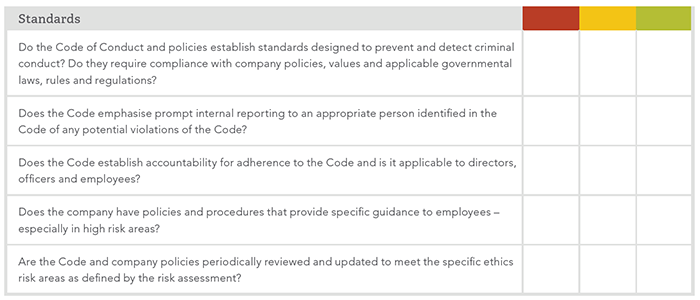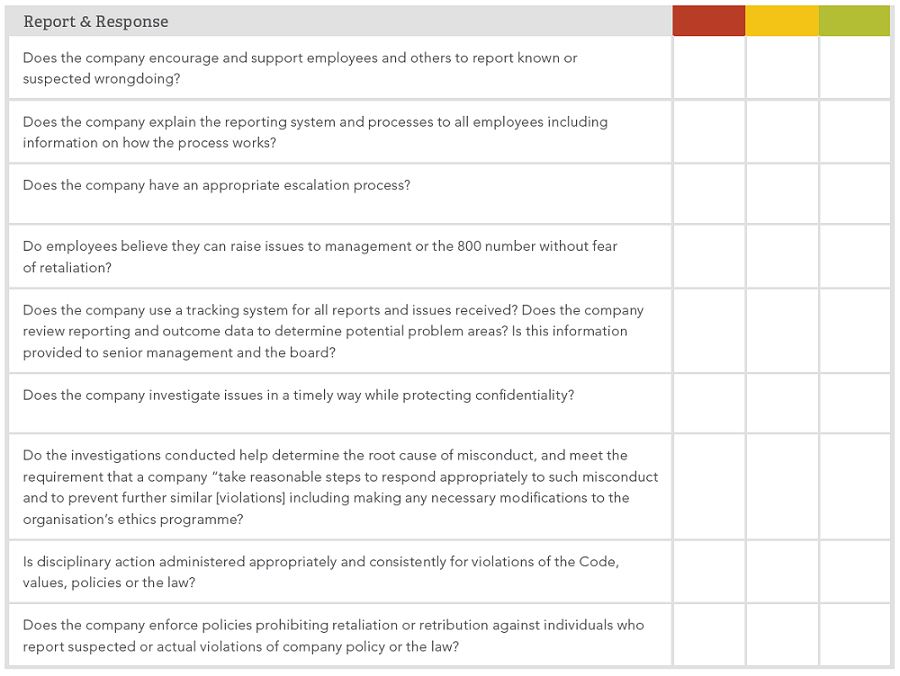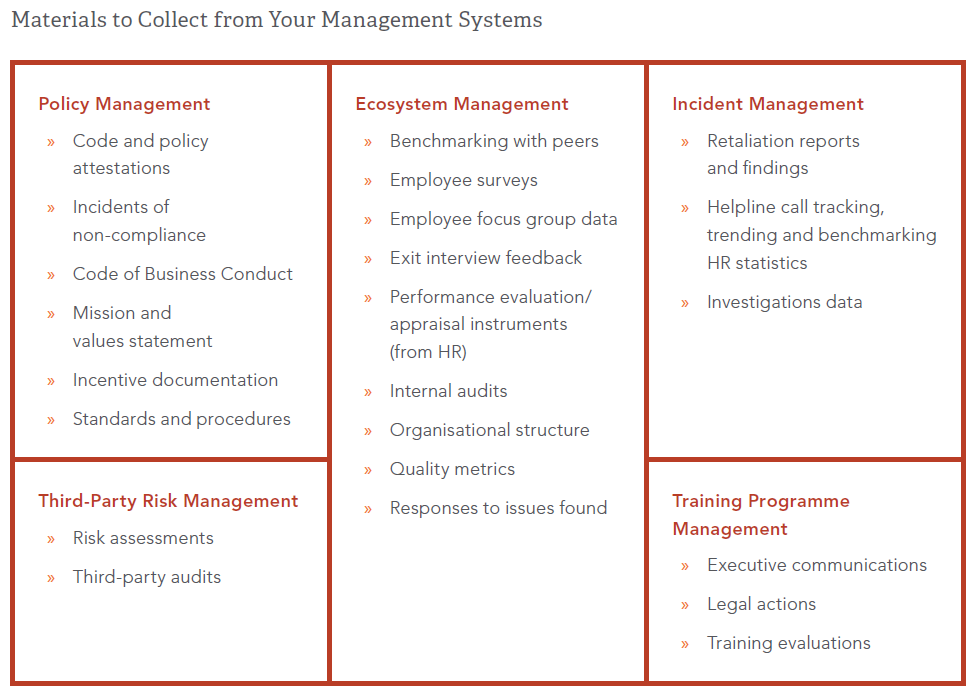Risk Assessment
A risk assessment is key to developing your organisation’s risk profile – the starting point of an effective programme. Your risk profile is an evaluation that identifies the unique risks your organisation may face given its industry, geography and employee population. A periodic, comprehensive risk assessment will help regularly identify potential criminal, reputational and ethical risks.
Need help managing and assessing your risks? Contact us to see how we can help.
Use the chart below as a self-assessment to see how you are currently evaluating your risks.
- Green: We have the best practices in place with a robust process
- Yellow: We are in the process of developing a robust process
- Red: We do not have a process in place or know how to implement one

If your responses fell mostly in the green column, you have the right processes in place to get an accurate picture of your risks. If most of your responses fell in the yellow or red category, review the resources included below to get a better idea of where your risks may be.
Dig Deeper with These Risk Assessment Resources
Resource: Risk Assessment Framework
Use this framework to walk through the steps of a risk assessment process including the identification, assessment, mitigation, and ongoing monitoring and reporting of these risks.
Resource: Sample Risk Assessment Ranking & Reporting Process
Once you’ve identified the risks, it helps to map them out and prioritise them. Use this tool to create a heat map to prioritise your highest risk areas.
Resource: Anti-Bribery & Corruption Risk Assessment Checklist
Use this list to see the risks your organisation faces in regards to bribery and corruption.



